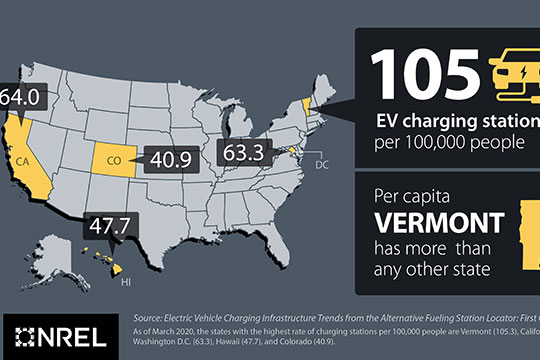Sustainable Mobility Matters—Winter 2021
This quarterly newsletter highlights recent projects, partnerships, and publications related to NREL's sustainable mobility research.
Subscribe to receive this newsletter via email.

Coloring the Canvas of Our Mobility Future
NREL's sustainable mobility research offers a palette of solutions for decarbonizing transportation.
The task before us looms larger than ever as we turn the corner into 2021. According to the United Nations, concentrations of carbon dioxide in the atmosphere continue to rise, topping 410 parts per million during the first half of 2020. Globally, carbon dioxide emissions have ballooned by 62% from 1990 to 2019. To meet science-based targets of net-zero emissions by 2050, greenhouse gas emissions must fall 7% annually.
Such facts paint a stark picture of the rocky terrain on the road ahead to reach carbon neutrality, especially in the realm of transportation.
Yet I'm encouraged by the palette of technology solutions we have at the ready to add color and promise to that uncertain future. The National Renewable Energy Laboratory's (NREL's) sustainable mobility research does not just position us to decarbonize our transportation sector. It can unlock opportunities to improve our lives, revolutionize our freight lines, grow our economy, and bake resilience and equitability into the foundations of our mobility systems.
Here is just a glimpse of it: analysis of travel data gathered during the pandemic reveals the impacts of increased telecommuting; accessible online tools help planners and utilities—big and small—prepare for a future with more electric vehicles; consortia work to lower the cost of hydrogen, an energy-rich fuel that may power the trucks that lug goods across America's heartland.
Options abound for cutting emissions in transportation—and for doing it well. The paint has yet to dry on the canvas. What we choose to add is up to us.
Power forward,
Chris Gearhart
Director, NREL's Center for Integrated Mobility Sciences
P.S. Your perspective matters. We'd love to hear from you as a member of the sustainable mobility community. Let us know how this newsletter is working for you.
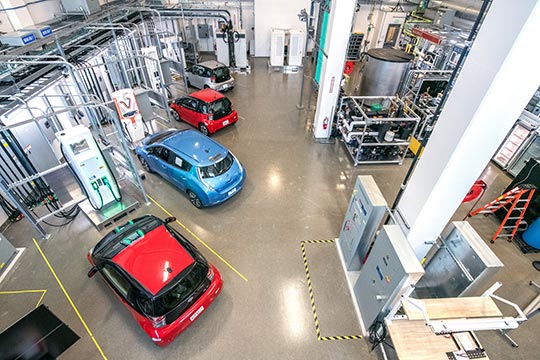
Electric Vehicle Research Infrastructure Evaluation Platform Explores Grid Impacts of Charging Systems
The new Electric Vehicle Research Infrastructure (EVRI) evaluation platform within NREL's Energy Systems Integration Facility creates a research space for transportation researchers, alongside commercial building and energy storage experts, to collaboratively investigate state-of-the-art strategies to manage the grid impacts of high-power, site-integrated electric vehicle charging. EVRI delivers unique research capabilities to the U.S. Department of Energy (DOE) and its national laboratory system, adding to a larger effort at NREL to identify significant improvements for battery performance and charging infrastructure.
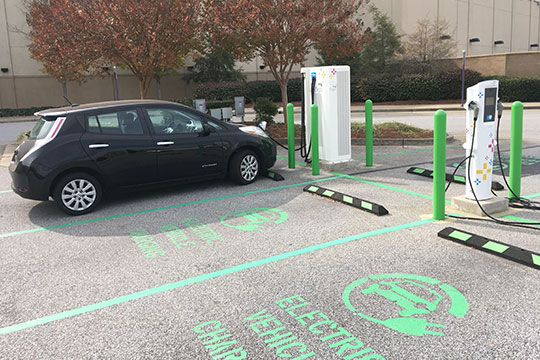
NREL-Developed Tool Predicts Impact of Increased Electric Vehicle Charging on the Grid
How might more electric vehicle (EV) charging affect the grid? An expansion to the Electric Vehicle Infrastructure Projection (EVI-Pro) Lite tool provides quick answers across thousands of scenarios. EVI-Pro Lite now projects daily electric loads from increased EV charging for regions across the country. In a few clicks, users can modify multiple variables—such as number of EVs, charging level, and more—to see how they affect electricity demand, giving utilities a tool to develop energy strategies for a future with more EVs. A forthcoming expansion, EVI-Pro RoadTrip, will focus on long-distance travel requiring use of high-power, direct-current fast charging along interstates and highways.

Taking It to Extremes: NREL-Led Project Explores Development of Oxide Electronic Devices for Extreme Operating Environments
An NREL-led team is working to develop electronic devices that can operate reliably and efficiently when exposed to high temperatures or otherwise extreme environments. Researchers identified a potential solution—oxide electronic materials and semiconductor devices—as part of the 3-year Oxide Electronic Devices for Extreme Operating Environments project, funded by the DOE's Advanced Manufacturing Office. An expansion of NREL's power electronics work, the findings from this project could lead to low-cost, all-oxide circuit elements to withstand high temperatures, corrosive atmospheres, and mechanical stresses.
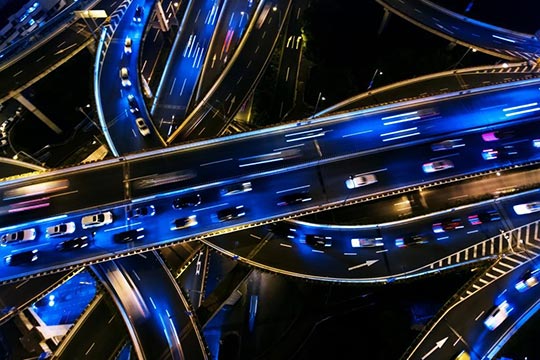
Researchers Illuminate Impact of Pandemic on U.S. Transportation Patterns, Travel Behavior
Researchers analyzed travel data from across the United States to illuminate behavioral changes during the COVID-19 pandemic and help inform epidemiological modelers about the spread of the virus. They identified regions in the United States where high levels of intraregional travel take place and analyzed changes in travel patterns across all modes (surface and air) along with the impacts of increased work-from-home behavior. Some of their mobility behavior findings are included in a Bureau of Transportation Statistics data portal, which illustrates vehicle travel trends and offers county comparisons.
Electric Vehicle Charging Stations Continued Strong Growth in Early 2020, NREL Report Shows
As EVs become more popular, the infrastructure to charge them is similarly expanding along highways, at workplaces, and at public parking lots. But just how fast are charging stations being installed? An NREL report answers this question—and others—with a snapshot of the rapidly changing landscape for EV charging during the first 3 months of 2020. During that time, public charging infrastructure grew 7.6%. For new numbers on the second quarter of 2020, read the latest report in the series on the evolving charging trends across the country.
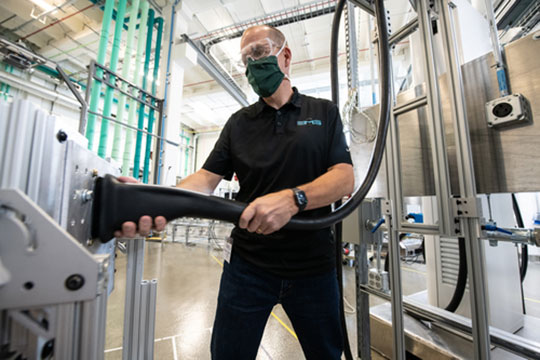
NREL Supports Industry Development of Megawatt Charging System Connectors, Charging Standard
In partnership with the Charging Interface Initiative (CharIN), NREL hosted a high-power charging connector event using the unique capabilities of its EVRI evaluation platform. Industry participants evaluated their prototype charging connectors and inlet hardware for commercial vehicle charging. In addition to supporting the design of interoperable charging hardware, the event and follow-on activities support the development of a new charging standard for medium- and heavy-duty electric vehicles. An industry standard for megawatt chargers will streamline the introduction of commercial electric vehicles by providing fleets with stability and certainty in accessing infrastructure they can use.
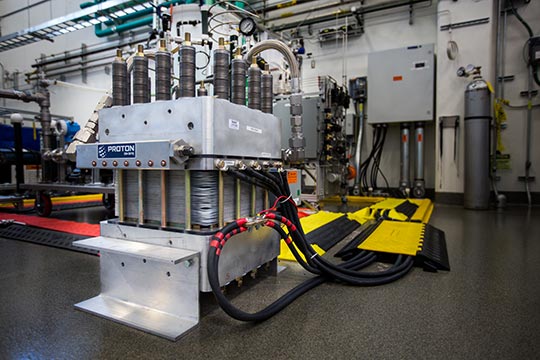
NREL To Lead New Lab Consortium To Enable Low-Cost Electrolyzers for Hydrogen Production
In October, DOE announced $100 million for two new national laboratory consortia to advance hydrogen production and fuel cell technologies R&D in support of DOE's H2@Scale vision. The H2NEW consortium, co-led by NREL and Idaho National Laboratory, will conduct R&D to enable large-scale manufacturing of affordable electrolyzers that use electricity to split water into hydrogen and oxygen. The Million Mile Fuel Cell Truck (M2FCT) consortium, which includes NREL, will conduct R&D to accelerate development of fuel cells for heavy-duty vehicle applications, including long-haul trucks.
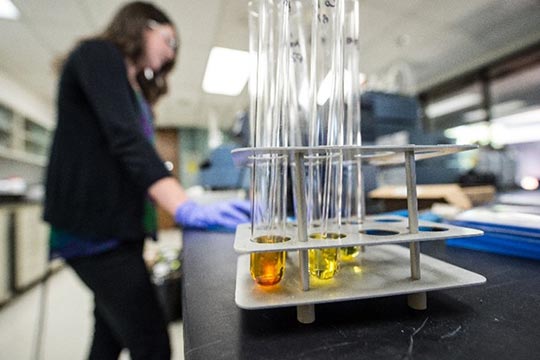
Co-Optima Reveals Scientific Basis for Bio-Based Fuels That Increase Light-Duty Engine Efficiency
Scientists with DOE's Co-Optimization of Fuels & Engines (Co-Optima) initiative have shared scientific details that will help researchers and industry identify viable candidates for bio-based fuels that can maximize performance and efficiency when used in turbocharged spark-ignition engines. A new computational tool that allows novel fuels being developed from biomass or other feedstocks to be evaluated based on critical fuel properties has been combined with a wealth of fuel property data to accurately identify fuel candidates capable of delivering efficiency, performance, and environmental benefits.
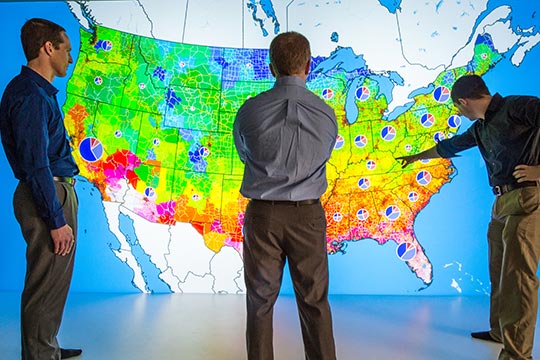
Transportation Secure Data Center Turns 10, Sees Dramatic Growth
NREL celebrated the 10th anniversary of the Transportation Secure Data Center (TSDC), a national resource providing free access to travel data from travel surveys and studies conducted across the nation while preserving the privacy of individual participants. In 2020, the TSDC saw a major spike in data with the addition of 76 data sets from the Metropolitan Travel Survey Archive, which includes travel studies dating back to the mid-1960s. The influx of these and other new data sets expands TSDC coverage into new states and cities, allowing researchers to evaluate mobility patterns across a wider variety of geographic areas, and in some instances across time, to study how travel in different regions has evolved.
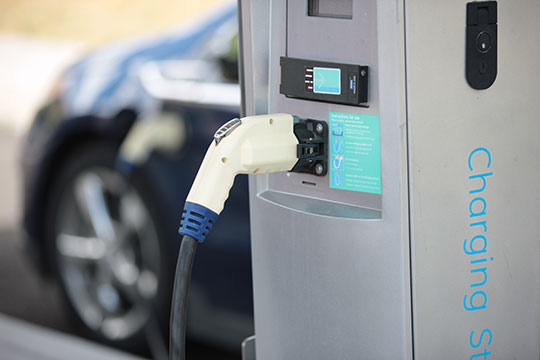
Mobility Research in the Spotlight at Annual Transportation Research Board Meeting
NREL transportation researchers will highlight their work at the 100th Annual Meeting of the Transportation Research Board, the world's largest gathering of transportation research professionals, to be held virtually Jan. 21–22 and 25–29, 2021. NREL presented on a variety of mobility topics such as connected and automated vehicles, first-mile/last-mile connectivity, ride-sharing, electric vehicle infrastructure, transportation fuel resiliency, energy impacts of telework during the COVID-19 pandemic, and many more.
Get To Know Our Team: Margo Melendez
As manager of NREL's sustainable transportation integration group, Margo Melendez coordinates industry, government, and fleet interest in implementing projects that reduce petroleum use in transportation. She also leads staff working on projects that advance emerging transportation technologies in the marketplace. Since joining NREL in 1999, she has worked on a variety of issues related to the transportation sector's transition to alternative fuels and advanced technologies, focusing on regulatory and policy incentives, consumer education and outreach, engine and infrastructure technology research, and alternative fuel and hydrogen transition analysis. She holds bachelor's and master's degrees in mechanical engineering from the University of Iowa and University of Michigan, respectively.

Must Reads
Hydrogen Production
NREL researchers co-authored an Applied Energy article that examines how flexible operation of electrolyzers to produce hydrogen for fuel cell cars and trucks could support the grid, lower electricity costs, and reduce greenhouse gas emissions.
Electric Transit Buses
Conducted in partnership with the U.S. Agency for International Development, an NREL study assessing the electrification potential of transit fleets in two Mexican cities determined that at least 80% of Mexico City's operational bus days for the studied routes were suitable for electrification. Such simplified evaluations, which couple accessible GPS speed traces with an electric bus model to identify vehicle requirements, can be duplicated globally to advance energy-efficient mobility options.
Charging Technologies
An Applied Energy article highlights an NREL study investigating three charging technologies (in-route wireless charging, fast charging, and overnight Level 2 charging) for fixed-route, shared automated electric shuttles at the University of Michigan. They found that wireless chargers at designated stops enabled the shuttles to realize unlimited driving range with zero downtime—while allowing for 15% smaller onboard batteries—and can be more cost-effective than fast charging.
Did You Know?
Mobility systems are getting smarter with national laboratory data, analysis, and tools. Learn more in recordings from the SMART Mobility Consortium webinar series.
In the News
The New York Times
In a matter of years, the price tag of electric cars will compete with conventional models, according to Chris Gearhart, director of NREL’s Center for Integrated Mobility Sciences. A New York Times article unpacks this and other EV insights.
CNBC
The cost to produce renewable hydrogen is decreasing, but technical challenges remain. Listen to NREL's Keith Wipke and others in a CNBC video feature on overcoming the hurdles of hydrogen.
USA Today
Are electric vehicles better for the environment? NREL research and data help provide answers in this USA Today fact check article.
Scientific American
DOE is investing $100 million in hydrogen research over the next 5 years, drawing expertise from NREL and other labs to help jump-start the "hydrogen economy," according to a Scientific American article.
Share

